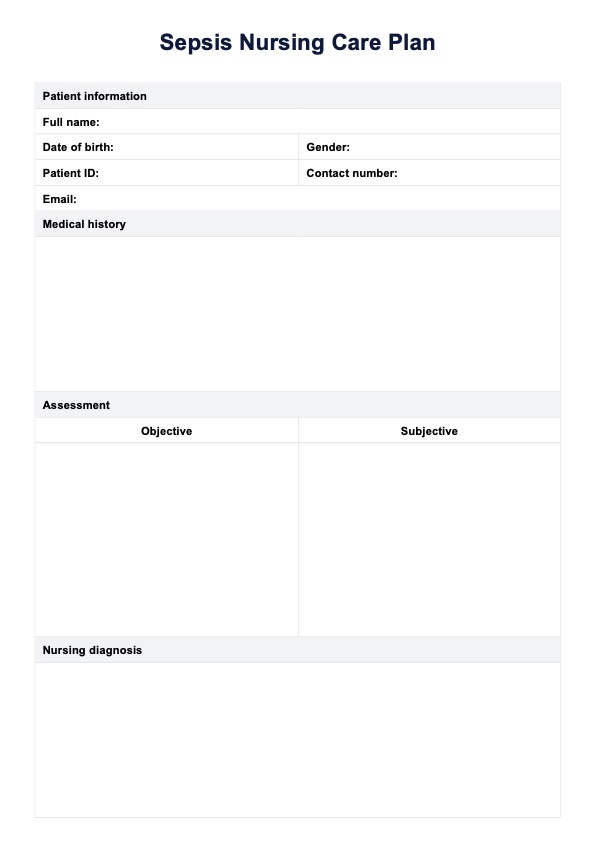Nurses should watch for signs of infection, altered mental status, rapid breathing, low blood pressure, decreased cardiac output, and elevated heart rate. Other critical indicators include abnormal body temperature, reduced urine output, and signs of organ dysfunction. Early recognition of these symptoms is crucial for timely intervention and preventing progression to severe sepsis or septic shock.

Sepsis Nursing Care Plan
Use this in-depth guide on sepsis management and care plans to deliver unparalleled care for this life-threatening condition.
Sepsis Nursing Care Plan Template
Commonly asked questions
Adequate fluid resuscitation is critical in sepsis management. It helps maintain blood pressure, improve cardiac output, and enhance tissue perfusion. It also supports the body's immune system response to infection and helps prevent organ failure. Nurses should closely monitor fluid balance, urine output, and hemodynamic parameters to ensure adequate fluid management in patients developing sepsis.
Blood cultures are essential for identifying the causative organism in sepsis and guiding appropriate antibiotic therapy. They help confirm the diagnosis of sepsis and inform the nursing diagnosis process. Positive blood cultures can influence nursing interventions, such as implementing specific infection control measures and administering targeted antimicrobial therapy, which are crucial components of sepsis and septic shock management.
EHR and practice management software
Get started for free
*No credit card required
Free
$0/usd
Unlimited clients
Telehealth
1GB of storage
Client portal text
Automated billing and online payments











